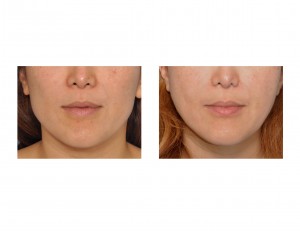Jaw angle reduction surgery, technically known as reduction gonioplasty, is a well known procedure to help reduce a square lower face. It is particularly common in Asians who often have more of a wider face with thicker masseter muscles and greater posterior jaw bone width. It has been practiced for years and is often part of other facial reshaping procedures with the goal of an overall thinner face.

In the September 2014 issue of the Journal of Craniofacial Surgery, an article appeared entitled ‘Long-Term Changes in the Masseter Muscle Following Reduction Gonioplasty’. In this paper, 56 patients were studied before and four years after jaw angle reduction surgery with 3D CT scans. The changes in the volume and shape of the masseter muscle were analyzed. Their results showed that the masseter muscle shrunk an average amount of 21% in the lower part of the masseter muscle in long-term follow-up.
This study confirms what would be suspected with elevating the masseter muscle for any surgery, whether it be jaw angle reduction, jaw angle implants or sagittal split osteotomies. Elevation and disinsertion of the muscle results in some degree of atrophy and loss of muscle bulk afterwards. This can potentially create a skeletonization of the jaw angle area which may account for some of the facial narrowing effect. This could have a positive or negative effect on the jaw angle reduction result depending upon how much bone is removed.
Dr. Barry Eppley
Indianapolis, Indiana


